Note: This website was automatically translated, so some terms or nuances may not be completely accurate.
"The Development Project for an Unprecedented New Miso Soup"
Next-generation creators forge a long-term connection between miso soup and young people
The "Unprecedented New Miso Soup" development project launched in September 2014. Born from Marukome's search for new points of contact between miso soup and young people, this project gained fans and generated significant buzz with unique products like "Miso Soup Listened to Rock Music" and "Cute Miso Soup (Harajuku Flavor)".
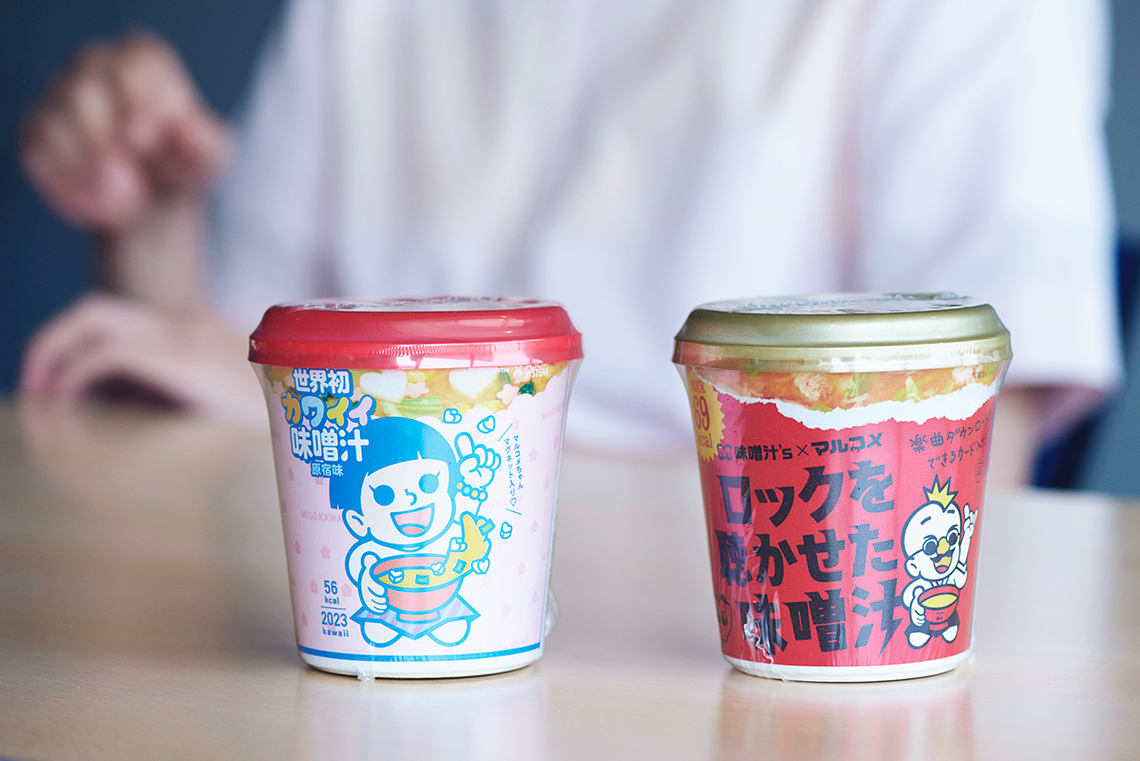
We asked Yusuke Sato of Dentsu Inc., who planned the project, about the secret to its success. You can glimpse the "iron rule of fan creation" unique to next-generation creators, applicable to any company facing the challenge of "wanting to connect with potential users."
Interview & Writing: Shiga Shoko, PR Table
※You can also read the full story behind this case study on PR Table.
Creating touchpoints with "young people" as potential customers

――First of all, what kind of initiatives were undertaken in this "unprecedented new miso soup" development project?
Sato: Marukome is a long-established company with over 160 years of history. However, over the past 40 years, per capita miso consumption has actually dropped by about 50%. For young people especially, miso is something they find hard to relate to and rarely talk about. If this continues, miso, and Marukome as a company, will become outdated. That's precisely why we needed to build a new relationship between young people and Marukome – that was the starting point. The challenge was how to involve teens and twenties in the story of creating "new miso soup." The output spans diverse projects: products, commercials, events, web content, graphics, and more.
――You mentioned products as outputs. How does this differ from what's commonly called "product tweaking"?
Sato: This time, the product itself is the biggest advertisement. The core of the communication is that this unbelievable product actually exists. We focused intensely on how it would resonate. For example, the "Miso Soup Exposed to Rock Music" actually uses miso that was played rock music. We also included a card to download rock music tracks. The calories were listed as 69 (rock) kilocalories... (laughs). By embedding multiple layers of PR-friendly hooks, we've given the product itself a tenacity that says, "I want to be featured in as many media outlets as possible!"
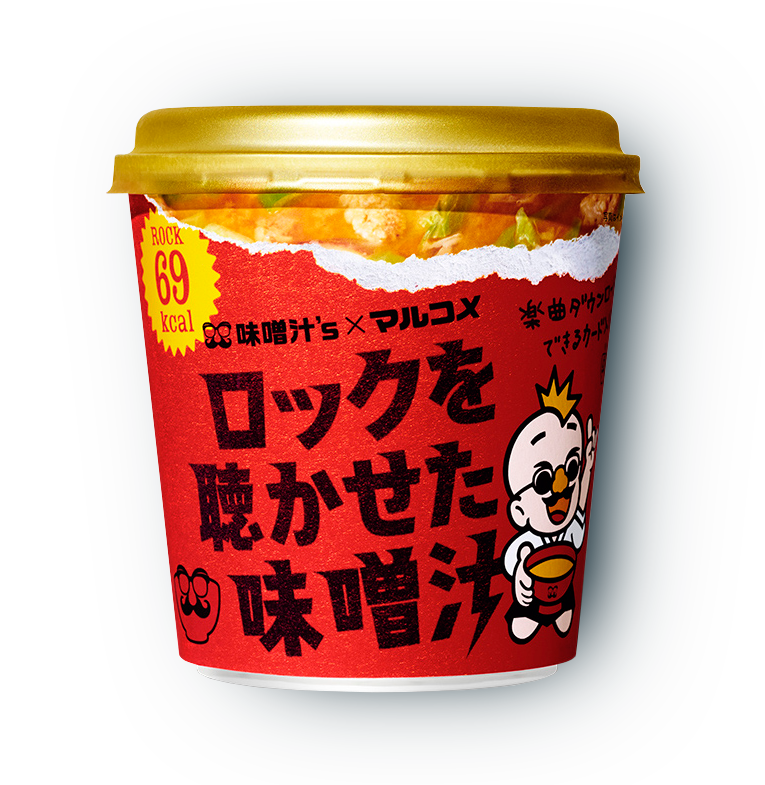

――I understand you focused primarily on non-mass media channels like TV commercials. For Marukome, young people are essentially potential customers. Wasn't it difficult to appeal to that demographic without mass advertising?
Sato: Marukome's challenge was building a "relationship" with young people. So, we first needed platforms where we could interact with them – social media and real-world events. Outdoor rock festivals, events featuring fashion models, Harajuku's Meiji-dori, events in Paris featuring artists like Kyary Pamyu Pamyu... We engage potential users, meaning young people, through that gap – "Why is miso soup there!?" It's precisely because of this gap that we reach young people and create new experiences. This is an area that can't be built through mass media alone. We then distill the results into product development. Ultimately, we position it to be picked up by mass TV. The sequence is reversed. We warm things up through SNS and events before going mass. We aimed for "long-term" communication, not just one-off events.
By continuously creating "small mountains," we stay constantly close to young people.
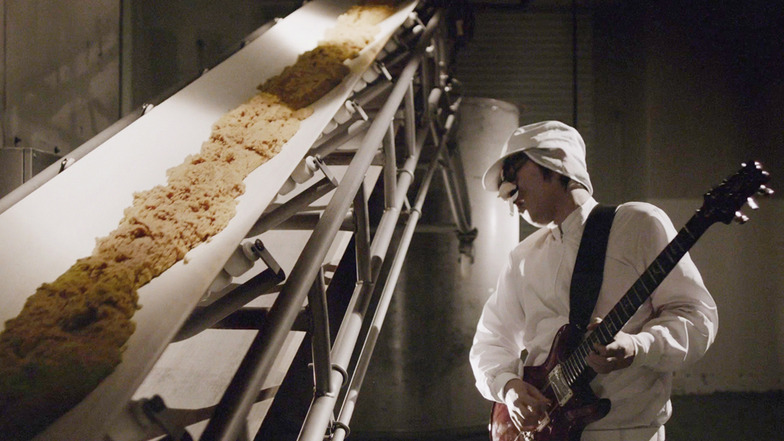
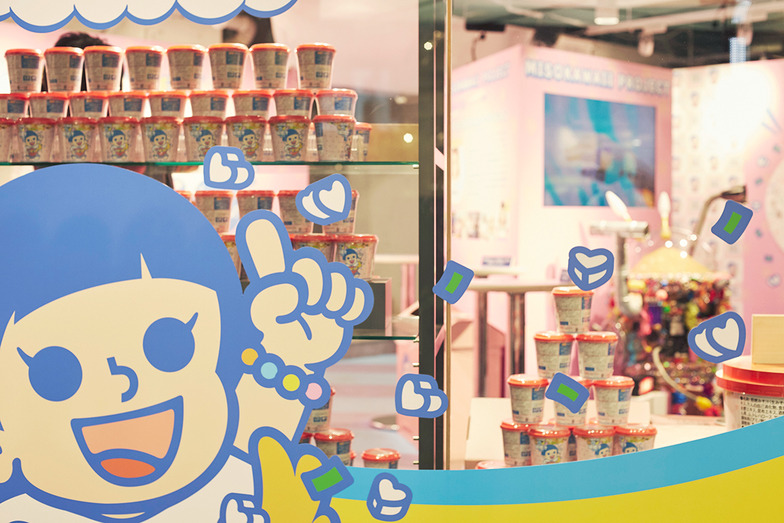
――The first installment launched in 2014 as "Miso Soup with Rock Music," followed by the second in 2015: "Cute Miso Soup (Harajuku Flavor)." What was the goal behind these two?
Sato: We aimed for universal appeal. If it was just "miso soup made in collaboration with a popular band," only the band's fans would react. That's a bit too narrow. By elevating it to the universal concept of "rock," it becomes something everyone finds interesting. The same goes for "cute." It's a theme young people universally care about. When miso is combined with this "universal" concept from an unexpected angle, a chemical reaction happens, making it instantly edgy. Also, coming from a commercial background, I valued that gut feeling of whether it would really pop when ultimately turned into a video.
――Well, miso soup itself is popular, or rather, universal, right? Just showing a new side to it makes the image of it becoming edgy come to mind.
Sato: That's right. But it's not just about being edgy. We actually considered quite a few concepts beyond "rock" and "kawaii," but in the end, it's still food, so it has to make people want to try it. Furthermore, since this is a project to "create a new connection between miso and young people," we had to be mindful of a concept that fosters long-term engagement.
――Meaning it shouldn't just be a short-term promotion; we need to turn them into long-term fans.
Sato: We aim to spark interest with edginess while creating as many touchpoints as possible. You never know exactly what will resonate with young people, so we adapt what we have ready next based on their reactions. We designed the campaign with many "doors" to enter, so young people could come in from anywhere. Plus, we continuously released small news bits and information, like little peaks, to create the feeling among young people that "Marukome has been doing some interesting stuff lately!"
――So you're saying you shared the story leading up to the product launch intermittently? Both "Rock" and "Kawaii" had about six months of continuous information sharing before launch, right?
Sato: Yes. Earlier I mentioned "small peaks," but the product launch is the "big peak." Being able to communicate directly at the point of sale, where people can physically hold the product, is hugely significant. This is also the prime moment for getting TV coverage. We launched the movie here too. By engaging with fans on social media over a long period, the launch timing naturally built excitement among fans – they helped amplify the buzz.
Communication strategies for today's era, made possible by our "30s team"
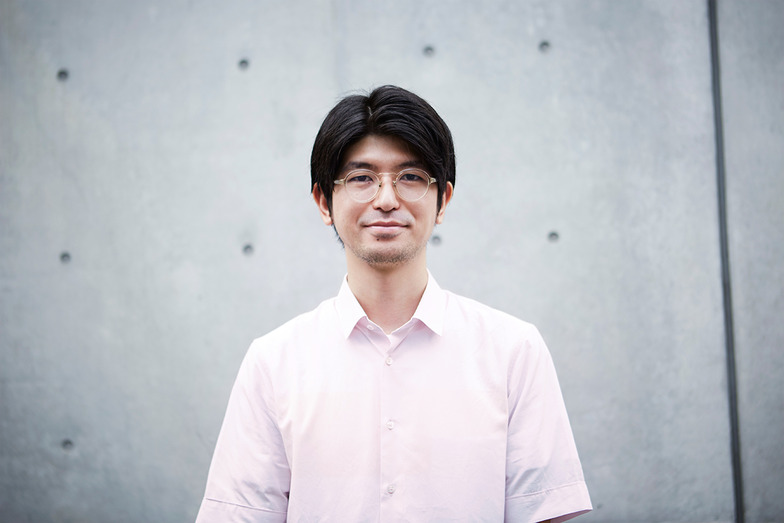
――Collaborations with companies can sometimes come across as overly "business-like" to fans and risk being disliked. Were you concerned about that?
Sato: We were extremely careful about that. For example, in the "Let's Listen to Rock~" campaign, we had the rock band Miso Soup's perform while eating miso soup. Fans responded very positively, saying things like "Marukome's promotion is cleverly offbeat and fun." That positive feedback from fans spread on social media and greatly helped our initial momentum. Plus, we decided from the start: "We absolutely must avoid alienating fans." So we began by offering miso soup samples right where fans gather. It wasn't about pleasing some invisible audience—it was about genuinely winning over the fans right in front of us. This time, that approach became the source of our message and successfully led to effective diffusion.
――I imagine many companies want to reach potential customers. In such cases, instead of blindly investing in mass advertising, the approach used here—where the company goes to where the fans are—seems like a useful reference point.
Sato: I'd be happy if it served as a reference. But I believe a key factor this time was Marukome's deep understanding and the fact that it worked precisely because we're members of our generation—specifically, in our 30s.
――What do you mean by that?
Sato: It's about approaching both "social media" and "mass media" as two axes. We think about TV commercials and web initiatives with the same mindset. Of course, the detailed tasks—the things we absolutely must do—are numerous and demanding. Even a single Twitter post is approached like copywriting. We run A/B tests to see which version spreads more effectively... Plus, since we ultimately want mass reach too, we can't just rely on paid ads; we need to maximize exposure through PR and TV publicity as well. Working backwards from that goal, we planned everything as a team with our peers: Art Director Nao Hirano (Dentsu Inc.), PR Planners Yohei Nemoto (Dentsu Inc. PR) and Yusuke Matsuo (Dentsu Inc. PR), meticulously plotting out every detail.
The generation younger than us is said to be skilled at social media, while our seniors are said to be skilled at mass media. We're sort of in the middle – we know the strengths of both and can move freely between them. It's not about being better at one or the other; we're good at using both. Or rather, we enjoy it. When it comes to utilizing TV commercials and realizing concepts, the training we got from our seniors really pays off.
――By combining "rock" and "kawaii," were you able to create a connection between miso and young people?
Sato: The goal was to maximize the volume of "Marukome-related conversations" on social media. Ultimately, it was meant to contribute to Marukome's recruitment efforts. We heard that more young people visited the recruitment site, and some even decided to join Marukome because of this project. That's really gratifying. It also resonated within Marukome itself; young employees have apparently started developing new miso soup products. This project has been renewed for future implementation, and we're currently working on new concepts.
――That's wonderful to hear. The decision to continue the project is proof that the activities so far have become an asset for Marukome, isn't it?
Sato: Creating something Marukome can sustain long-term was our goal from the start, so I'm glad we saw it through. We packed in everything we thought was "interesting" and "ideal," but now we must create something new. It's challenging, but I want to enjoy this journey with myself, my team, and Marukome.
Was this article helpful?
Newsletter registration is here
We select and publish important news every day
For inquiries about this article
Author

Yusuke Sato
Dentsu Inc.
5th CR Planning Bureau
Born in 1984 in Tokyo. 2017 Creator of the Year award recipient. ACC Award, ADC Award, TCC Award, TCC Newcomer Award, NY ADC Gold, Dentsu Inc. Advertising Award, Cannes Lions Young Lions Film Medalist, ADSTARS Grand Prix, AdFest Gold, among others.

